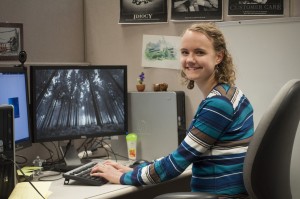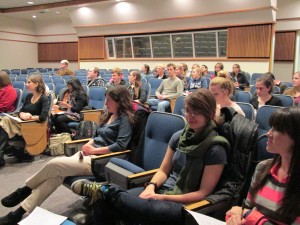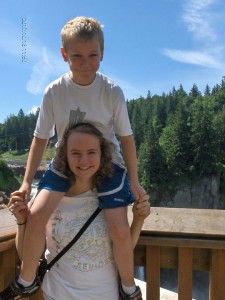It was her first day at her internship at Microsoft, and Christine Kendall thought sharing her Taekwondo experience would make her stand out during the “get to know you” session.
It turned out that nine of the 10 girls there had experience in martial arts. And even though Kendall stopped Taekwondo when she was 11, she said it helped her have the confidence to pursue a career in a predominately male discipline.

Kendall is now a junior at BYU and is working with clubs and faculty to make the computer science program more accessible to women.
In February, Kendall and computer science assistant professor Jay McCarthy met with Introduction to Computer Programming instructors and the department chair about restructuring the course so students could group themselves by experience level. The experience gap between women and men is a problem even at the introduction level, Kendall said.
“It’s intimidating,” Kendall said. “I feel like because of culture or society, men, in general, have more confidence in technical areas. I think it’s really easy to feel like an outsider and that you don’t belong, especially when you hear all your classmates talking about their personal projects and what they’ve done on the side.”
The curriculum of the introductory course won’t change, but because of Kendall and McCarthy’s effort, there will probably be sections designated for different experience levels. McCarthy drew the idea from the example of Harvey Mudd College, a small tech-oriented school which recently raised the ratio of women in their computer science program from 14 to 46 percent in three years, according to statistics presented at a recent conference.
Kendall has proven herself in the department, according to Ken Rodham, an associate professor of computer science.
“She is incredible,” Rodham said. “She is very tenacious and diligent…everything she does is done with very high quality.”

In 2011 Kendall attended the annual Grace Hopper Celebration of Women in Computing, which is “the world’s largest gathering of technical women in computing,” according to its website. Sheryl Sandberg, Facebook CEO, was the keynote speaker.
Sending women to the Grace Hopper conference was the second part of Harvey Mudd’s successful strategy to attract women to its computer science program, and Kendall and McCarthy are following that example also. They’re working with representatives from the College of Physical and Mathematical Science and LDS Philanthropies to find corporate sponsorships to send interested women from intro to computer programming courses to the conference.
Kendall is president of BYU’s Women in Computer Science Club and the only female officer in the Association of Computing Machinery, which recently began providing some funding to Women in Computer Science.
According to Rodham, the Women in Computer Science Club was fairly inactive until Kendall and a few other women took charge last year. Now, 50-60 people attended the opening social, and 20-25 attend the bi-monthly meetings, according to Kendall.
“Most of the time when I tell girls I’m majoring in computer science they say, ‘I could never do that,’” Kendall said. “I want Women in Computer Science to help break that stereotype.”
Despite such growth, Kendall said there is still some inequality in interactions among students.
“I feel like my recommendations on how to approach something aren’t taken seriously because I’m a girl,” Kendall said.
But when her suggestions turn out to be right, people start listening.

Since her first summer at Microsoft, Kendall has returned for a second internship there. She also spent a summer as a volunteer programmer for the Church. She was one of the first two programmers to begin working on Learning Suite because of her job as a programmer for the Center for Teaching and Learning.
Kendall wants to pursue a Ph.D. and eventually become a professor because there are not many female computer science professors in general and none at BYU. It’s also important to Kendall to not work full-time.
Since computer science is a marketable, highly valued skill that can be done from home, Kendall said it’s a good option for many LDS women. But for those deciding between computer science and a major that seems easier, Kendall has a deeper reason for her recommendation.
“Majoring in computer science is empowering,” Kendall said. “It is difficult, so going through the program gives you this confidence (to feel like), ‘If I come up to a problem, in any aspect of life, I can solve it.’ If you take an easier major you don’t come out with that sense of confidence and accomplishment.”




